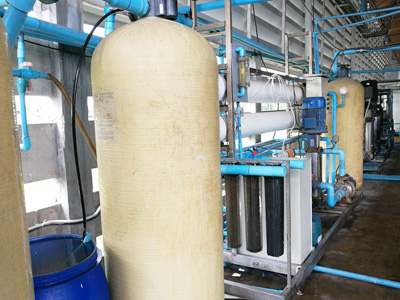Focus on Electroless Nickel Plating
Various metals can be plated, and the plating film has a consistent thickness that is easy to control. It provides excellent adhesion, hardness, wear resistance, and corrosion resistance.
Production Capacity |
Shaft Components : 15,000,000 Pieces / Month |
| Pin Components : 25,000,000 Pieces / Month |
| Jig for Hanging Shaft |
| Oil Removal |
| Ultrasonic Cleaning |
| Acid Soaking Process |
| Ultrasonic Cleaning |
| Electrolytic Degreasing Process |
| Electroless Nickel Plating |
| DI Water Cleaning |
| Passivation Process |
| Hot Water Cleaning |
| Drying |
| Chemical control |
Please click on each process
 |
Production for Extra-Length MaterialsCan accommodate cutting up to a length of 2100 mm.
|
Prevents shafts from colliding and causing scratches. Light components and small pins are placed on the grid of the hanging rack. |
Oil Removal Before Metal Plating ※The main cause of poor adhesion in metal plating is incomplete surface preparation before plating. After the oil removal process, a water rinse is performed to remove chemicals. If water droplets are found on the product, indicating incomplete oil removal, the process will be revisited to ensure complete oil removal. |
||||
Using an Ultrasonic Cleaning Machine (This cleaning method uses ultrasonic waves to generate bubbles in the liquid, and the impact from the collapsing bubbles is used for cleaning). |
Stimulating the material's activity to enhance metal coating adhesion. It also removes rust and the film formed from heat treatment on the material's surface, using hydrochloric acid or sulfuric acid depending on the type of material. |
||||
Using an ultrasonic cleaning machine (a cleaning method that uses ultrasonic waves to generate bubbles in a liquid, and utilizes the shock waves from the collapsing bubbles to clean). |
Removing fine abrasive residues, such as polishing marks that cannot be removed by the acid immersion process. |
||||
The plating time is determined by the desired thickness of the film. |
Carry out each process as necessary. |
||||
Process that forms an oxidation film by force (corrosion prevention process). |
Final rinse with warm water. |
||||
Dry |
We record and manage the concentration, pH value, plating temperature (temperature during analysis and temperature in the tank), and use the most suitable plating solution. |
||||
Pure water is produced within the company, and waste is collected and disposed of by a government-approved waste disposal service provider. |
|











